…and I was, as usual…
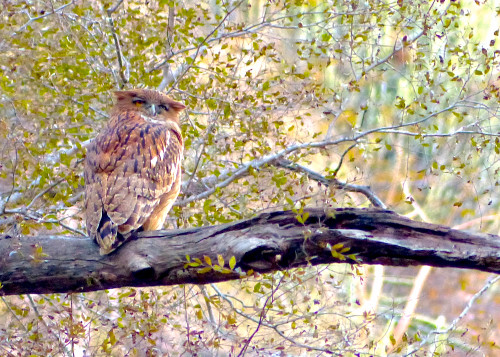 Here are portraits of two different Brown Fish Owls (Ketupa zeylonensis) spotted on my recent trip to northern India.
Here are portraits of two different Brown Fish Owls (Ketupa zeylonensis) spotted on my recent trip to northern India.
<< Brown Fish Owl, Ranthambhore Natl Park, Rajasthan, India (Click to enlarge, all photos A. Shock)
You might not be surprised that FISH Owls never stray far from permanent water features, where they feed mainly on aquatic prey. This owl (or one just like it) was later seen snacking on a water snake at dawn. Not sure what a water snake was doing within talons-reach of an owl on a cold January dawn, but now it’s owl cells.
Here’s the snake-snack, a Checkered Keelback Water Snake (Xenochrophis piscator) basking stream-side, maybe even the same individual, I’d photographed earlier:
Further north, in the Himalayan foothills, another Brown Fish Owl gazed down on us as we walked under its day perch in the Kumeria Forest Preserve near Nainital, Uttarakhand, India:
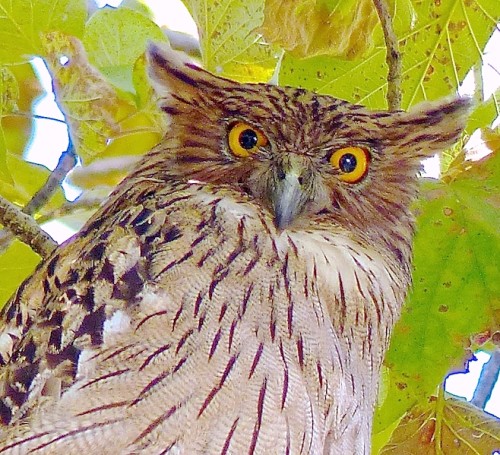
Brown Fish Owl knows you are up to no good (photo A.Shock)
On this theory, here are more owlets, Spotted again.
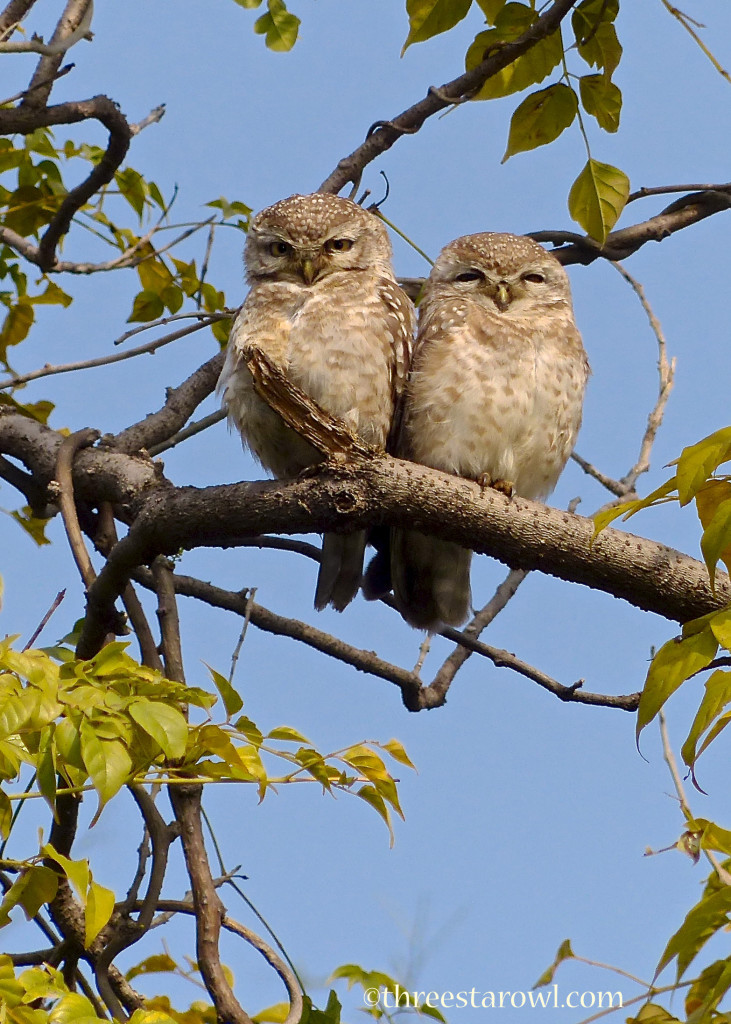
Spotted Owlets (Athene brama), photo A.Shock
This snuggly pair was day-roosting near Shiva’s old, golden temple in Keoladeo National Park in Bharatpur, India. When you are an owlet in India, a good perch is one the macaques don’t know about yet. Macaques are almost always up to no good, in my opinion.

Devi Lakshmi, the goddess of wealth and fortune, is often depicted with a white owl, which is her vārana, or symbolic mode of transport >>
I’m going to assume that an owl who can convey a deity is one of the larger species, and not an Owlet, but I’m no expert on where theology and ornithology intersect, or even if Kadam trees are a good place to find large owls, as this sign from the park seems to indicate:
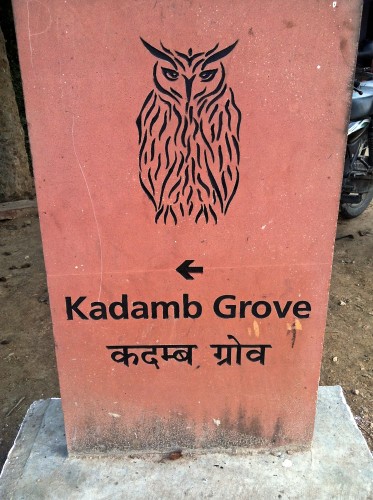
Posts have been thin on the ground around this site recently. One reason is that I’ve been away for nearly a month, traveling and though not entirely disconnected with the internet, at least without a way to get photos off my camera to share. I was lucky enough to spend about three weeks roaming northern India — a country I’ve long wanted to see — just looking, and looking and looking — from the excellent vantage point of open jeeps, trains, tuk-tuks, cycle rickshaws, and a bouncy bus.
There’s no short way to record impressions of any country, but India defies summary even more than most places. So I’m intending to take nibbles of sights and thoughts I carried away with me and present them delicately like morsels of meat offered by a raptor parent to its chick — small pieces easily swallowed, or stored in the crop for later digestion.
And where better for Three Star Owl to start than with OWLS?
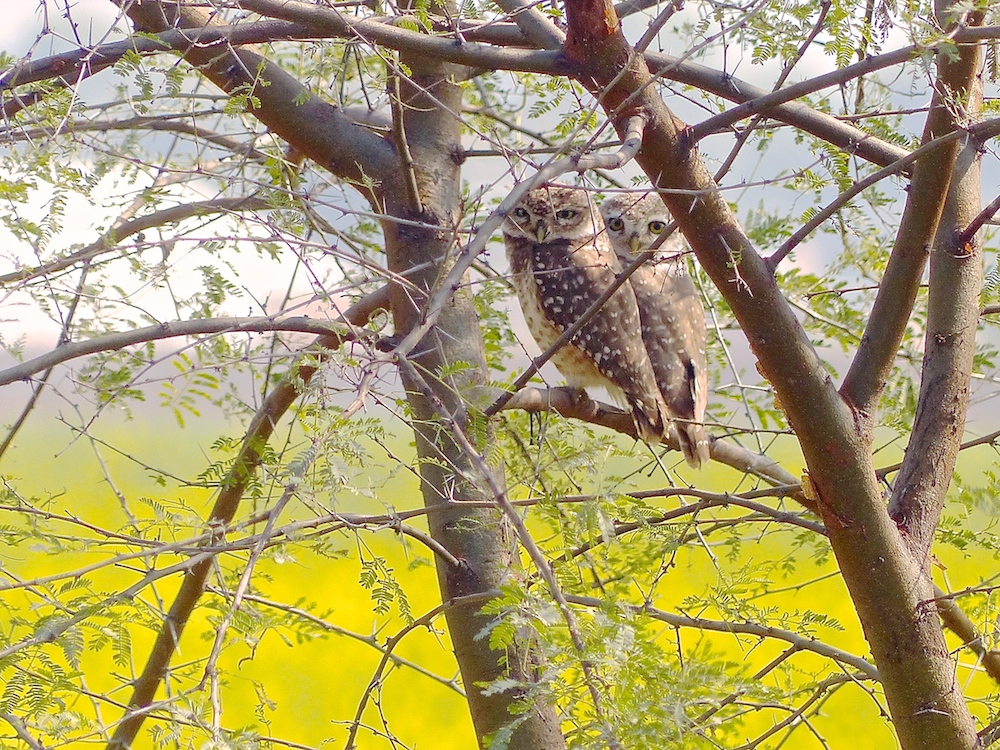 It turns out that India is full of OWLS, and they are often easy to see. The explanation the experts offer is that they are neither hunted for food nor persecuted by the people, so they feel secure in daytime roosts, out in the open. The smaller species (often named “owlets” because of size, not immaturity) string themselves like grapefruit-sized beads on the branches of acacias or rhododendron trees in fields and forests, pressed together in an owly lump in batches of two or several, squinting in the sun and pretending they can’t be seen.
It turns out that India is full of OWLS, and they are often easy to see. The explanation the experts offer is that they are neither hunted for food nor persecuted by the people, so they feel secure in daytime roosts, out in the open. The smaller species (often named “owlets” because of size, not immaturity) string themselves like grapefruit-sized beads on the branches of acacias or rhododendron trees in fields and forests, pressed together in an owly lump in batches of two or several, squinting in the sun and pretending they can’t be seen.
Above are some Spotted Owlets (I believe, although they may be Jungle Owlets — if you know, please chime in!) in eastern Rajasthan, the yellow of mustard fields (grown and pressed for oil production) in the background. (Photo A.Shock)
 Here are portraits of two different Brown Fish Owls (Ketupa zeylonensis) spotted on my recent trip to northern India.
Here are portraits of two different Brown Fish Owls (Ketupa zeylonensis) spotted on my recent trip to northern India.





